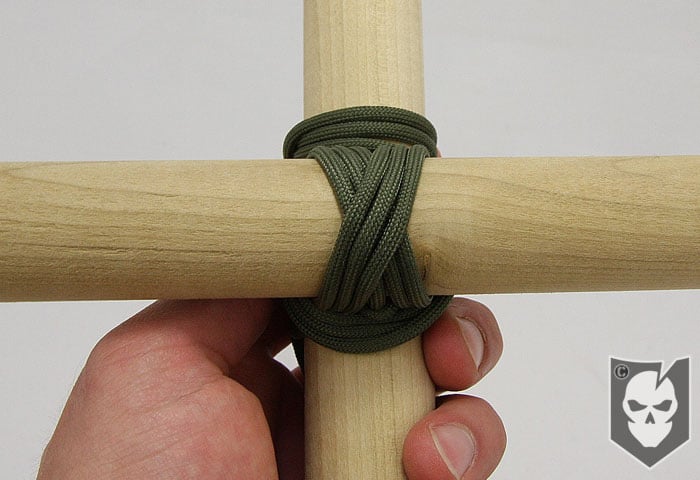Today we continue our KOTW Lashing series with the Diagonal Lashing.
The Diagonal Lashing is “diagonal” because it’s used to bind poles that cross each other at a 45 ° to 90 ° angle. Binding poles together in this way will prevent racking and add stability, thus preventing them from moving apart.
A Diagonal Lashing can replace a Square Lashing (which is stronger), but not vice-versa.
Diagonal Lashing » Lashings
(Strength: 4/Secure: 4/Stability: 3/Difficulty: 3)
Please refer to our Knot of the Week introduction post for a description of what these ratings mean.
Uses:
- Binding poles that cross each other at 45 ° to 90 ° angles
- Creating cross-braces on a structure
Tying Instructions:
- Start your Diagonal Lashing with a Timber Hitch on your bottom-most pole.
- A Timber Hitch is simply a turn around the post and wrapping the working end a few times around the standing end (see photos).
- Tighten the Timber Hitch on the bottom-most pole and wrap the working end over the crossing pole.
- Wrap three times from both directions (right angles) to create an “x” shaped pattern.
- Make three frapping turns in the space between the two posts.
- Finish the Diagonal Lashing off with a Clove Hitch and cut/tuck in the excess cordage.
[flickrset id=”72157624572085340″ thumbnail=”square” overlay=”true” size=”medium”]
